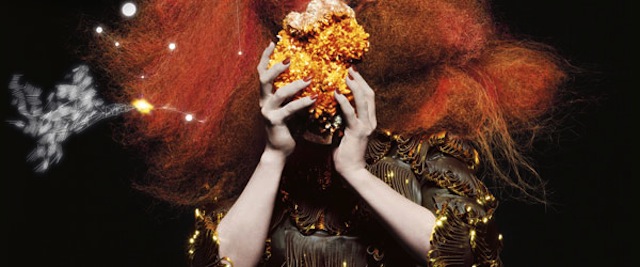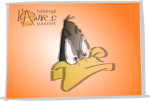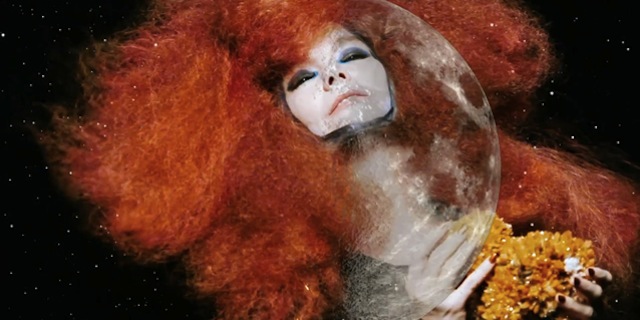How Touchscreen Tech Inspired Björk’s Latest Multi-Dimensional Album
For years now, musicians have done a lot more than wield guitars, basses and drum kits in order to create jams — PCs, mobile devices and tablets have made a serious entree into the musical world. Perhaps the most recent example of such digital wizardry is Icelandic songstress Björk’s newest multi-dimensional album experience, Biophilia.
Biophilia, which was released as a full album on Oct. 11, is not just a musical project. It also contains a suite of custom apps, instruments and live experiences conceptualized by Björk after she was introduced to touchscreen technology.
I sat down with the musician before the album’s release to talk about the inspiration behind the technology, and to analyze how music changes and evolves as more creative tools enter the fray.
Q&A With Singer-Songwriter Björk
How did touchscreens function when it came to conceptualizing Biophilia ?
The entry point was touchscreens, really. On the last tour, from 2006 to 2008, we were working with touchscreens. I guess for me, touring with it and performing with it kind of tapped into something in me that made me want to write with it. It tapped into my musical education, where I felt that it was too bookish. I went to music school from five to 15, and it was quite classical, academic. I wanted to start a music school where I would have things more impulsive and more tactile.
I always had a dream to [teach] when I got older. But then, this sort of pop thing happened. So I guess when I saw the touchscreens, I was like, ‘Wow, I can do this now.’ It just seemed like such an ideal way to map out how you feel about musical structures. All the apps out there, the best ones … take something that’s been academic and make it into a 3-D environment. Some things are fine in books, but certain things — like music and physics — are meant to be 3-D.
How did this technology affect your writing process ?
I had always written my songs, since I was a child, by singing outside, and then I would come indoors and arrange them. For me, it was the first time where I was using an instrument while I was writing. I don’t write playing the guitar. Maybe it’s because I’ve always sang outside walking, especially as a kid. In a way you could argue that my accompaniment was nature.
That was my root — my relationship that I was at home in. It was the most natural for me. So to be able to sit with a touchscreen and play with your fingers while you’re singing is kind of like, ‘Wow, finally.’ Technology has caught up with us.
But people are laughing at me when I say that I’m a bit technophobic. It takes me forever to learn things. It took me like five years to drive a car, and it takes me forever because I’m quite impulsive. I’m kind of spoiled because I’ve done a lot of my music — especially as I get older — myself on my laptop, but usually I have an engineer sitting next to me that helps me out when I get into trouble. So for somebody like me to see the touchscreen, it’s like, ‘Wow, now I don’t have to program something for weeks and months.’ So that’s sort of the entry point.

But you didn’t just use touchscreens to write the album. They’re also part of the experience of the disc. How does that work ?
In the beginning, the idea was to use touchscreens to write the songs, and connect them with nature — the elements. And then I didn’t know what the platform would be. In the beginning it was going to be a children’s music museum in Iceland. So I was writing, thinking about rooms. The first room is about lightning, so the children can play with a Tesla coil, and that’s the bassline, and then they walk to the next room and it’s like water, and they can make a riff with the water. Then they go to the next room, and it’s crystals. So I was thinking like it was an interactive children’s thing.
And then in the middle there was a chance that it might become a 3-D movie. It seems like a big jump, but for me, the jump between a room in a house to a scene in a movie isn’t that big a jump. And then that was super difficult and expensive — because obviously music was most important for me. I wasn’t ready to wait like five years.
And then, basically Spring 2010, I programmed 10 songs. They each had 10 different natural elements with 10 different musicology elements, and the interaction in each song had already been decided — and then the iPad came out. So it was kind of like, ‘Wow, maybe this is the natural home.’ [The music started] off as a touchscreen and it should end as a touchscreen.
So did you buy an iPad as soon as it came out ? Do you have favorite apps on the iPad for making music ?
I bought the iPad and got apps like Soundrop, by Max Weisel, who ended up writing three of our apps. And Scott Snibbe’s ones — like Bubbleharp and Gravilux. And then Touch Press, who did The Elements, and they later did Solar System.
It was just kind of outrageous because it was sort of like, ‘Wow, I had already written a song about the solar system, and I had already written a song about viruses.’ The subject matter I already had in my songs was viruses, the moon, the solar system, DNA.
Do you think technology is negatively impacting music at all ?
I’ve been doing interviews for a long time, and I get asked so often, ‘Why electronic music ? It’s so cold. It has no soul.’ And I’m like, ‘Well, it doesn’t have a soul because no one put it there.’ It’s not the tool that puts the soul in there — it’s the person. I’ve heard a lot of acoustic songs — songs written on a guitar — that have no soul. I’ve heard a lot of songs written on a guitar that have soul. It’s the tool and it’s the question of what we do with it.
For example, [you can use auto-tune] to hide your faults, like Botox or something. Or you can use it as a creative thing. It’s your choice. I used a product called Melodyne a lot on this album. It was first invented to tune your voice. But you can use it more to create harmonies. I would improvise a song, and then I would take my lead melody and put it in Melodyne, and then you can copy it. I went totally greedy and ended up with like 10 voices — but made out of that lead vocal.
I spent days on each song, [manipulating] each note so that each note would be like six different notes. What’s exciting is that you capture the emotion of the moment, because obviously when you’re writing a song, you feel a certain way and it’s quite emotional. But if you are working with one lead vocal and making harmonies out of that, the emotion stays there. And if you have seven voices made out that same emotion, you magnify it.
Then what I did is that I went to Iceland and got a choir of 24 girls, and they ended up singing those harmonies, and they were actually quite difficult for a choir to sing because they were quite dense.
So you can cover up your faults and use this program by tuning your voice, or you can use the same thing and create chords that you couldn’t have done without it. So it’s your choice — do you want to be lazy, or do you want to push yourself and be creative ? It’s always going to be that question ; it’s never going to go away. Every day we have to ask ourselves, ‘What are we going to do with this tool ? Are we going to cut someone with it, or prepare a meal ?’
This album has so many different elements — apps, instruments, etc. — do you think a listener needs everything in order to experience it fully ?
It’s totally up to them. I don’t think my fans should buy everything. Obviously they can if they want to, but I’m not like that at all. I don’t buy box sets, but I respect collectors a lot. But I really wanted the album to stand on its own. And also, if you just want to buy one of the apps, and aren’t that bothered by the music, you can do that as well.
At the end of the day, though, it’s not that complicated, because in a normal band — whatever that is — you have drums and guitars and bass and keyboards and a vocalist and you have a concert. I have the touchscreen and I have instruments that are able to read that touchscreen. Normal bands have music videos ; for me, the apps are even better than music videos, because music videos can be interpretations of the songs, but the apps are actually the songs. They’re the visual representations of the song.
What do you think is the most misunderstood aspect of Biophilia ?
If there’s one thing I’d like to change is to make people realize that it’s not that complex, and that the whole intention was to simplify something that was always supposed to be simple. I’ve been saying it’s a bit like reading a whole book about how to break dance. It’s impossible. But if you have the touchscreen in front of you, and you play around with it, it’s really simple.
More About : contributor, Entertainment, features, ipad, Music
For more Entertainment coverage :
- Follow Mashable Entertainment on Twitter
- Become a Fan on Facebook
- Subscribe to the Entertainment channel
- Download our free apps for Android, Mac, iPhone and iPad
Cet article est repris du site http://feeds.mashable.com/~r/Mashab...
 L’Imp’Rock Scénette (by @_daffyduke_)
Logiciel libre, rock’n roll et biochimie ...
L’Imp’Rock Scénette (by @_daffyduke_)
Logiciel libre, rock’n roll et biochimie ...




